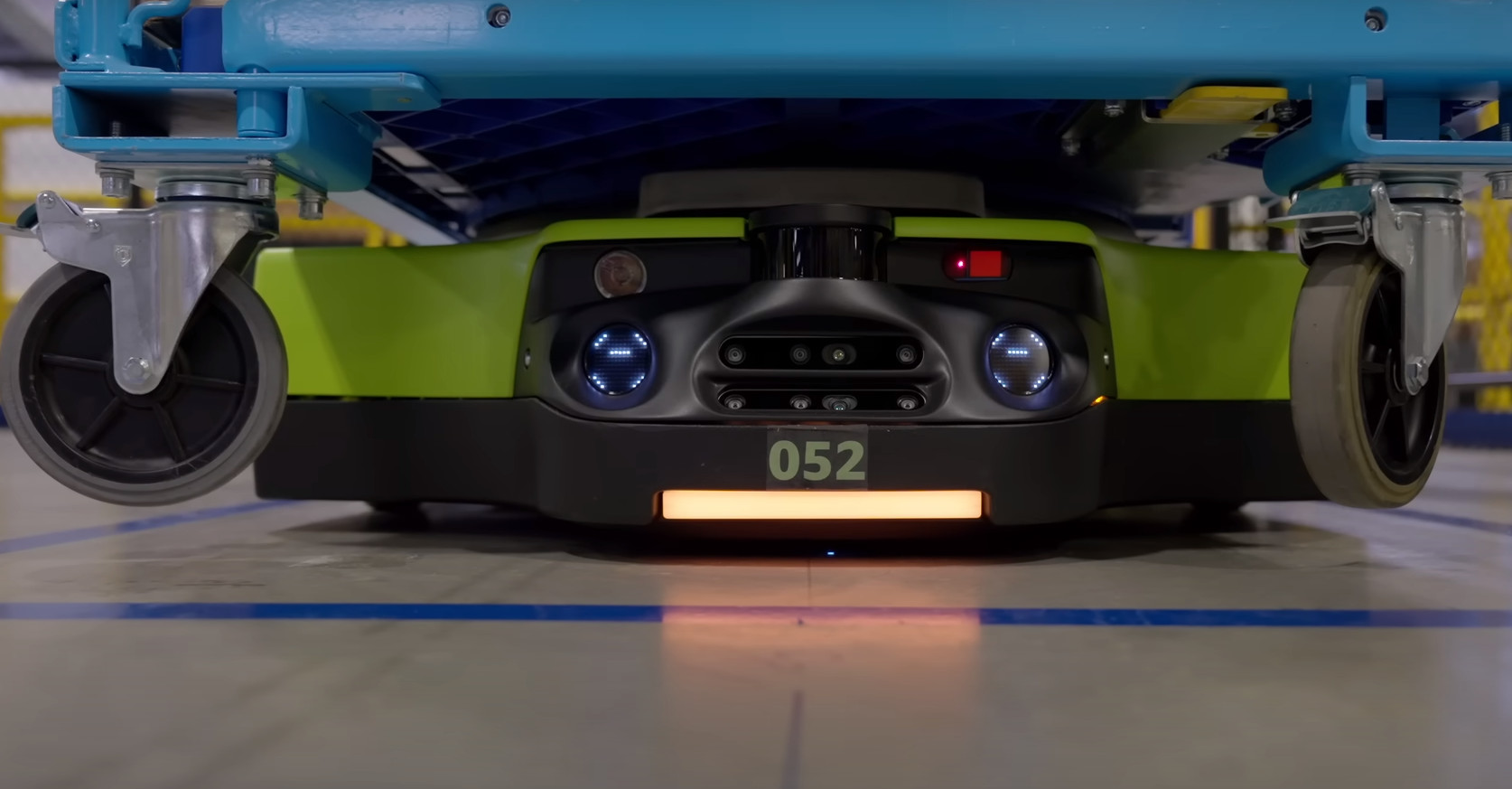Amazon is doubling down on robots in an effort to improve its warehouse safety, unveiling fully autonomous models.
Amazon is sometimes criticized for having higher warehouse injury rates than the industry average. In 2021, its injury rates among warehouse workers went up some 20%. CEO Andy Jassy, while saying its injury rates are “misunderstood,” nonetheless emphasized the company’s commitment to improving safety. Two big steps in that direction are its Proteus and Cardinal warehouse robots.
Amazon’s robotics efforts have their roots in Kiva, a robotics company Amazon acquired a decade ago. While some speculated Amazon was looking to replace people, it has developed Kiva’s tech to assist human workers and make their workplace safer, as the company outlines in a blog post.
Proteus is the company’s first fully autonomous robot. Integrating an autonomous robot in a warehouse with human workers presents safety challenges of its own, but Amazon believes they’ve cracked the code.
Proteus autonomously moves through our facilities using advanced safety, perception, and navigation technology developed by Amazon. The robot was built to be automatically directed to perform its work and move around employees—meaning it has no need to be confined to restricted areas. It can operate in a manner that augments simple, safe interaction between technology and people—opening up a broader range of possible uses to help our employees—such as the lifting and movement of GoCarts, the non-automated, wheeled transports used to move packages through our facilities.
Similarly, the company’s Cardinal robot is designed to handle the twisting and lifting that goes along with finding and retrieving a single package from a pile of packages.
Enter Cardinal, the robotic workcell that uses advanced artificial intelligence (AI) and computer vision to nimbly and quickly select one package out of a pile of packages, lift it, read the label, and precisely place it in a GoCart to send the package on the next step of its journey. Cardinal reduces the risk of employee injuries by handling tasks that require lifting and turning of large or heavy packages or complicated packing in a confined space.
After becoming CEO, Andy Jassy looked for a “silver bullet” that would improve warehouse safety in one fell swoop, ultimately realizing there was no single thing to magically address the issues.
“But, we still have a ways to go, and we’ll approach it like we do other customer experiences—we’ll keep learning, inventing, and iterating until we have more transformational results,” he said. “We won’t be satisfied until we do.”







 WebProNews is an iEntry Publication
WebProNews is an iEntry Publication